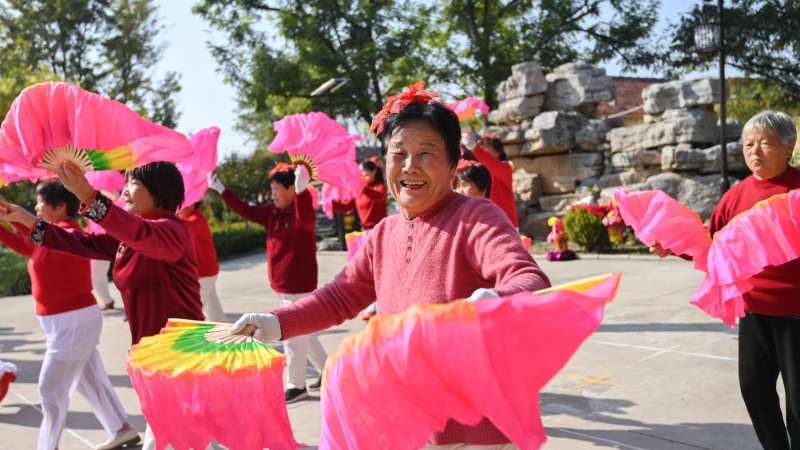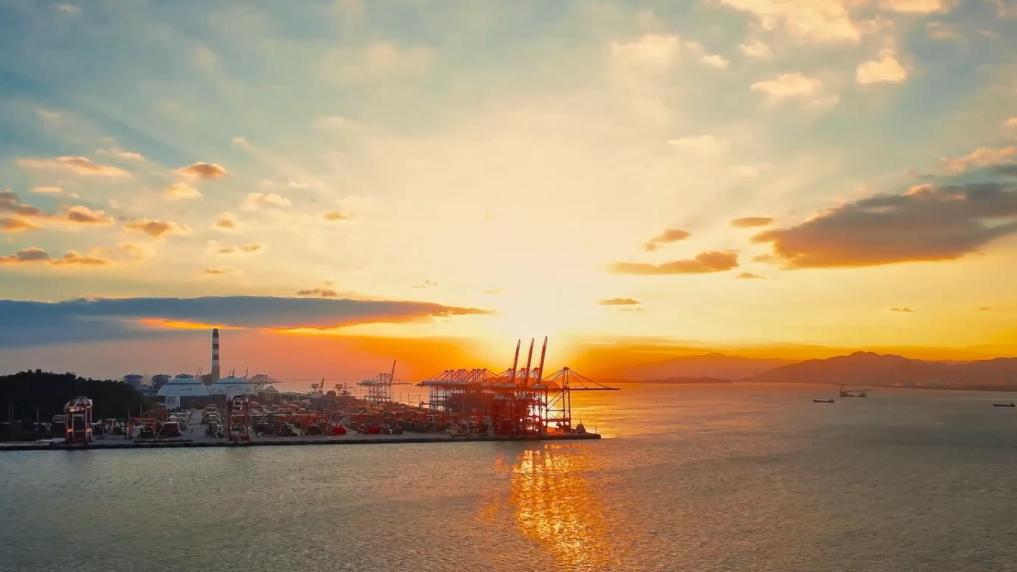Xinhua Headlines: China-ASEAN FTA 3.0 to fuel economic growth, strengthen regional integration
Source: Xinhua
Editor: huaxia
2025-10-29 20:33:48
* The signing of the China-ASEAN FTA 3.0 Upgrade Protocol in Kuala Lumpur on Tuesday paves the way for expanded economic and trade cooperation -- boosting regional integration and global trade.
* Via such continuous development of the China-ASEAN FTA, bilateral market access has expanded and trade volume grown, while economic cooperation has deepened.
* The Version 3.0 upgrade aims to create an inclusive, modern and mutually beneficial agreement that deepens regional economic integration and strengthens supply chain connectivity.
NANNING, Oct. 29 (Xinhua) -- A ceremony was held on Monday at the assembly plant of Guangxi Automobile Group in the city of Liuzhou, south China's Guangxi Zhuang Autonomous Region, to mark the shipment of the 5,000th complete vehicle exported by the company to ASEAN.
This milestone represents a new achievement in the international development of Guangxi's automotive industry, which is being driven by continuous upgrading of the China-ASEAN Free Trade Area (FTA).
Notably, the signing of the China-ASEAN FTA 3.0 Upgrade Protocol in Kuala Lumpur on Tuesday paves the way for expanded economic and trade cooperation -- boosting regional integration and global trade.
"We have been deepening our presence in key ASEAN markets such as Singapore, Malaysia, Vietnam, Thailand and Indonesia. As of Monday, our export value to ASEAN markets had exceeded 200 million yuan (28.23 million U.S. dollars)," said Feng Xue, director of the innovation and development department at Guangxi Automobile Group and vice general manager of Wuling New Energy Company.
Feng added that the signing of the China-ASEAN Free Trade Area 3.0 Upgrade Protocol will bring unprecedented opportunities for Guangxi enterprises to expand their presence in ASEAN markets.
This upgrade marks the latest stage in the evolution of the China-ASEAN FTA, which was initiated in 2002 and fully implemented as Version 1.0 in 2010. A subsequent Version 2.0 protocol was signed in 2015 and came into full effect in 2019. Negotiations for the Version 3.0 upgrade began in November 2022 and were successfully concluded in May 2025. Via such continuous development of the China-ASEAN FTA, bilateral market access has expanded and trade volume grown, while economic cooperation has deepened.
Strengthened trade ties have been instrumental in the region's growth. China has been ASEAN's largest trading partner for 16 consecutive years, while ASEAN has been China's top trading partner for the past five years. Bilateral trade reached 982.3 billion U.S. dollars in 2024 -- representing a 17-fold increase since 2002. In the first three quarters of 2025, bilateral trade totaled 5.57 trillion yuan, up 9.6 percent year on year, accounting for 16.6 percent of China's total foreign trade.
The China-ASEAN FTA is expanding from traditional trade and investment liberalization and facilitation to new sectors like the digital economy and green economy, while also focusing on standards and industrial and supply chains. The Version 3.0 upgrade aims to create an inclusive, modern and mutually beneficial agreement that deepens regional economic integration and strengthens supply chain connectivity.
DIGITAL ECONOMY DRIVING BROADER COOPERATION
The China-ASEAN FTA 3.0 strengthens both "hard connectivity" -- such as cross-border fiber optics and data centers, and "soft connectivity," via aligned regulations and standards. This creates a solid institutional foundation for regional digital trade.
At the Youyiguan Port, also known as Friendship Pass Port, in the city of Pingxiang in Guangxi, a shipment of five containers of durians imported from Thailand and Vietnam by Guangxi Rongsheng International Logistics Co., Ltd. underwent initial customs checks.
This process, which includes ID verification, temperature screening and license plate recognition, has been fully integrated. Truck drivers complete all initial steps at a single checkpoint -- with clearance taking only 15 seconds before proceeding to customs inspection.
"In the past, from vehicle entry and queuing for inspection to submitting quarantine documents, our company had to assign staff to be on site to handle paperwork and wait in line," said Yu Weipeng, business manager of the company. "Now, with the Smart Youyiguan app, we can upload documents electronically and archive them instantly by scanning a QR code. From the moment a truck enters the port to its release, we have full real-time visibility of the process."
So far this year, the company has imported more than 4,000 containers of ASEAN fruit -- including durian, dragon fruit and jackfruit. Thanks to the faster clearance system, consumers in China can enjoy fresher tropical fruit, said Yu.
Cross-border e-commerce has also broken down traditional trade barriers in recent years, with platforms like TikTok and Shopee driving trade growth. New models such as digital finance and logistics have also become integral to China-ASEAN trade.
As a key hub for China-ASEAN e-commerce, Guangxi has established seven cross-border e-commerce pilot zones -- attracting over 600 companies. From January to September 2025, the region's cross-border e-commerce trade value exceeded 35 billion yuan, up more than 110 percent year on year, with nearly 70 percent involving ASEAN.
Kao Kim Hourn, secretary general of ASEAN, emphasized that the China-ASEAN FTA 3.0 has positioned digital cooperation as a core pillar. It opens doors in e-commerce, digital trade, data governance and payments. China, with its advances in AI, big data, cloud computing and digital finance, backed by more than a billion internet users, is a global leader in digital transformation.
"The Version 3.0 upgrade will bring our economic cooperation to a height, particularly in new areas, e-commerce, digital trade and payment. This is very important between ASEAN and China, particularly in the context of current global economic dynamics," he added.
UPGRADING RULES, STANDARDS FOR DEEPER COOPERATION
The Version 3.0 upgrade represents the highest level of agreement between China and ASEAN on technical regulations and conformity assessment. It signifies a shift from focusing solely on tariff reductions to establishing rules -- expanding cooperation from trade and investment to standards and regulatory systems.
"Both sides aim to build a unified and modern regulatory framework to reduce non-tariff barriers and promote deeper integration, reflecting a significant institutional upgrade," said Li Guanghui, academic dean of China-ASEAN School of Economics of Guangxi University.
The upgrade also introduces higher facilitation measures in customs and quarantine procedures. By developing mutual certification and recognizing inspection results, compliance costs for businesses will be significantly reduced.
Liu Qing, vice president of the China Institute of International Studies, noted that Version 3.0 particularly addresses the needs of micro, small and medium enterprises from both sides, which will significantly enhance the resilience and stability of regional industrial and supply chains, ultimately advancing regional economic integration to a deeper level.
In recent years, Chinese automaker SAIC-GM-Wuling (SGMW) has achieved notable success in its economic and trade investments in ASEAN countries. Since establishing its first wholly-owned overseas production base in Indonesia in 2017, the company has invested over 1 billion U.S. dollars. Evolving from building factories abroad to creating transnational supply chains -- SGMW has facilitated 17 Chinese industrial partners to collaborate with more than 60 local Indonesian suppliers.
Huang Xun, chief technology officer of R&D Quality at SGMW, said: "The upgraded Version 3.0 of the China-ASEAN FTA will enhance mutual recognition of standards and conformity assessment results. This will significantly reduce costs and time spent on duplicate testing and certification -- enabling companies to deliver products to the market more efficiently, thereby enhancing their competitiveness."
The signing of the protocol undoubtedly infuses strong positive momentum both across the region and globally, said Xu Liping, a researcher with the Chinese Academy of Social Sciences. This move sends an obvious signal to the world that, as the most dynamic and substantial partnership in the Asia-Pacific, China and ASEAN have been instrumental to regional and global growth, Xu added.
The China-ASEAN model exemplifies a distinctive approach to regional collaboration -- one grounded in mutual respect and equality regardless of national size. This unique paradigm reflects a deepening sense of a community with a shared future, standing out as a noteworthy feature in contemporary regional governance, according to Xu.
(Reporting by Qiang Lijing, Huang Yaoteng, Zhu Lili, Tian Zijun and Zhang Feng; Video reporters: Liang Shun, Huang Kaiying, and Qin Guanghua; Video editors: Zhang Yichi, Roger Lott and Liu Xiaorui) ■













Comments